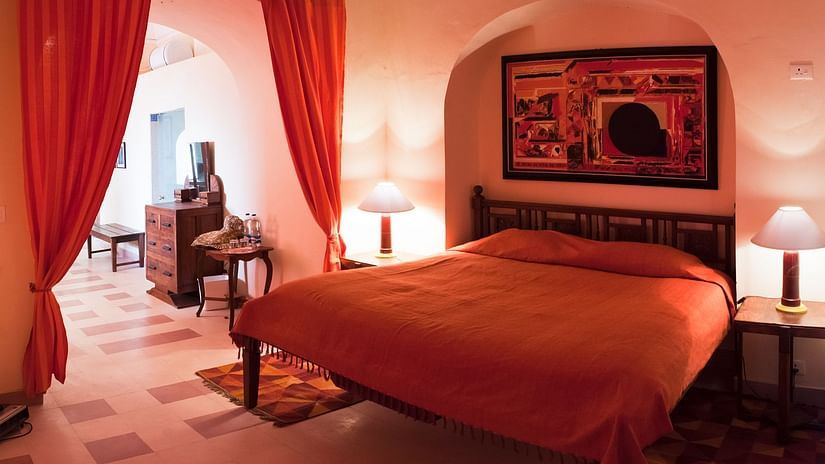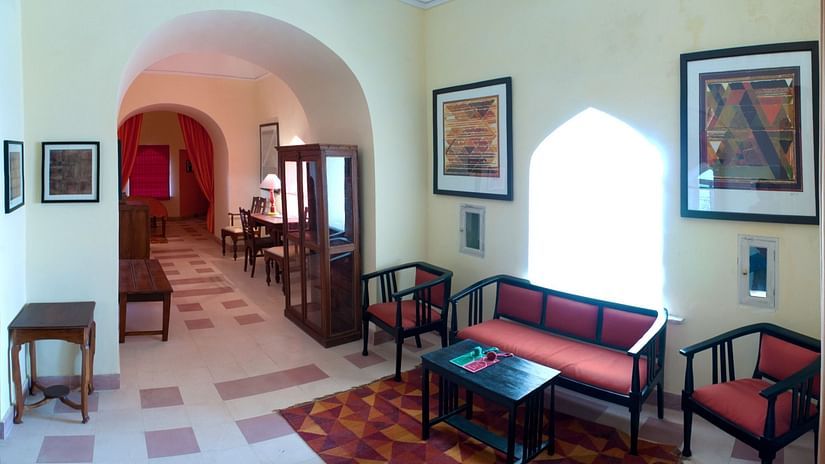

The Mardana rooms are built around a spacious garden court ringed on three sides by spectacular arcade halls. These had never been completed and large rocks had to be hand-chiselled to create linear living spaces. The thick walls were pierced to make balconies with views of the countryside. Each room has two or three square rooms linked with wide arches and the facilities are discreetly tucked within.
Three square spaces linked with two wide arches lead to an octagonal turret which honours the work of painter S.H. Raza and his able student Manish Pushkale. Vibrant abstractions of Raza’s work including the iconic one he proudly offered Mother India, evoke his greatness. The Bindu inside the dome is mirrored in a rug on the floor. Manish’s work is more subdued and subtle.
Features
- Level/Floor - First
- No. of beds - 1 Double
- People accommodated without extra bed - 2
- No. of extra beds can be provided - 1
- Window
- View from the room - Field & Hill view
- Mini-bar/kettle